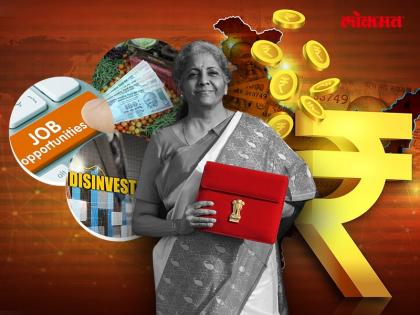Nirmala Sitharaman tables Economic Survey 2022-23; Here are the key figures
By Lokmat English Desk | Updated: January 31, 2023 18:49 IST2023-01-31T18:23:21+5:302023-01-31T18:49:43+5:30
Finance Minister Nirmala Sitharaman tabled the Economic Survey 2023 in Parliament on Tuesday. The survey, released a day before ...

Nirmala Sitharaman tables Economic Survey 2022-23; Here are the key figures
Finance Minister Nirmala Sitharaman tabled the Economic Survey 2023 in Parliament on Tuesday. The survey, released a day before Budget 2023 is scheduled to be presented, comes amid global recessionary fears.
India’s baseline GDP growth in real terms for FY24 has been pegged at 6.5 per cent. This is broadly comparable to estimates provided by multilateral agencies such as the World Bank and the International Monetary Fund (IMF). According to the survey, the actual outcome for real GDP growth in FY24 will probably lie between 6 and 6.8 per cent, depending on the global economic and political scenario. This is less than the 7.0 per cent growth estimate for FY23 and the 8.7 per cent growth achieved in FY22.
Inflation
According to the survey, the 6.8 per cent inflation projection of the RBI for FY23 is neither too high to weaken private consumption nor weaken the inducement to invest.
Meanwhile, the report mentions the RBI's CPI inflation projection for Q1 FY24 at 5.0 per cent and for Q2 FY24 at 5.4 per cent on the assumption of a normal monsoon.
Growing exports
The survey highlighted the resilience displayed by India’s exports this fiscal year on the back of record levels of exports in FY22. Petroleum products, gems and jewellery, organic and inorganic chemicals, drugs and pharmaceuticals were among the leading export items. Merchandise exports touched $332.8 billion in April-December 2022, compared to $305 billion during the same period the year before.
Current Account Deficit
India’s current account balance (CAB) recorded a deficit of 4.4 per cent in Q2 FY23, in contrast to 1.3 per cent during the corresponding period of the previous year. The widening of the current account deficit (CAD) was mainly due to a higher merchandise trade deficit of $83.5 billion and an increase in net investment income outgo, according to the survey. For the period between April and September 2022, India recorded a CAD of 3.3 per cent of GDP, compared to 0.2 per cent a year before.
Growth in capex
The Centre’s capital expenditure (capex) went up 63.4 per cent between April and November 2022. The increased capex has become a growth driver of the economy, said the Survey.
key figures from the 2023 Survey
| Baseline GDP Growth | FY24 Estimate | 6.50% |
| Real GDP Growth | FY24 Estimate | 6-6.8% |
| CPI Inflation* | Q1 FY24 Q2 FY24 | 5 5.4 |
| Merchandise Exports | April-December 2022 April-December 2021 | US$ 332.8 billion US$ 305.0 billion |
| Current Account Deficit | H1FY23 H1FY22 | 3.30% 0.2 |
| Centre's Capex Growth | April-November 2022 | 63.4 |